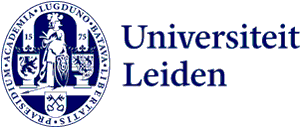
The Role of Humans in Surgery Automation
Eduard Fosch-Villaronga, Hadassah Drukarch and Bart Custers from eLaw - Center for Law and Digital Technologies, explore together with Pranav Khanna, eLaw alumnus, the influence of automation on human–robot interaction and responsibility in surgery innovation.
Recent trends in healthcare innovation have reflected a drastic increase in the autonomy levels of surgical robots. Despite the many clear benefits of promoting constant innovation in the field of healthcare robotics, its application in the real world presents multiple gaps that can cause harm in a way that humans cannot necessarily correct or oversee. While the benefits of autonomous surgical robots are abundant, the interplay between robot manufacturers, healthcare providers, and patients poses new risks with the surgical procedure's outcome being no longer limited to the skill of the surgeon. This necessarily begs the question: who is responsible when something goes wrong?
In a new paper published in the International Journal of Social Robotics, Eduard Fosch-Villaronga, Hadassah Drukarch and Bart Custers from eLaw - Center for Law and Digital Technologies, explore together with Pranav Khanna, eLaw alumnus, the influence of automation on human–robot interaction and responsibility in surgery innovation.

Entitled “The Role of Humans in Surgery Automation”, the publication maps how the role of different stakeholders in highly autonomous robotic surgeries is transforming, and explores some of the challenges that robot manufacturers and hospital management will increasingly face as surgical procedures become more and more automated.
Building on their recent publication a human in the loop in surgery automation featured in Nature Machine Intelligence, the authors from eLaw map the autonomy levels and the role of humans in robot surgeries. They argue that with progressive robot autonomy, performance, oversight, and support will increasingly be shared between the human surgeon, the support staff, and the robot (and, by extent, the robot manufacturer), blurring the lines of who is responsible if something goes wrong.
While the benefits of robot-assisted surgeries abound, introducing a robot in traditional surgeries is not straightforward and brings about new risks that conventional medical instruments did not pose before. In those lines, not having a clear framework that establishes a common minimum baseline for robotic surgeons creates incongruity in procedural safety.
To bring more certainty to this increasingly complex ecosystem and provide answers to the concerns surrounding stakeholder responsibility in surgery robotization, we bring forward a three-layered solution in the form of a Robot Impact Assessment (ROBIA), a Robo-Terms framework inspired by the international trade system 'Incoterms', and a standardized adverse event reporting mechanism, to add clarity to the role of stakeholders before, during, and after robot-enabled surgeries.

By painting a clear picture of the exact role of humans in robotized surgeries, we may be enabled to better map liability and bring certainty concerning the ascription of responsibility. Only when we do so, can the full benefits the use of robotic innovations and solutions in surgery could bring to healthcare providers and receivers be realized.
This research was conducted under the Healthcare robots and AI Marie Skłodowska-Curie postdoctoral research grant that was awarded to Eduard Fosch-Villaronga. This project was part of the LEaDing Postdocs Fellowship Programme, a project funded by the European Union’s Horizon 2020 research and innovation program under the Marie Skłodowska-Curie grant agreement No 707404. For more information about the research conducted on the topic of healthcare, robots & the law, please visit this website.
